Last week the House Committee on Ways and Means (HWM) submitted its state budget proposal for Fiscal Year (FY) 2023. Compared to the Governor’s budget proposal earlier this year, the HWM budget is an example of what is possible when policymakers choose to focus on important investments in the state’s future rather than on tax cuts for the wealthy. Unlike Governor Baker’s proposed tax cuts, a majority of which would go to the state’s highest income earners, HWM chose to use the state’s revenues to provide higher levels of support for education, health care, housing, human services programs, and more.
Policymakers will be enacting the FY 2023 budget as federal COVID relief dollars start to taper off. Massachusetts has received more than $115 billion in pandemic relief from the federal government in the form of direct payments to individuals, support for businesses and organizations, and grants to state agencies and community groups. Not only has this federal support put money in people’s pockets, it has lifted the state’s economy and helped boost state tax collections. But most of this federal money is temporary and the related state tax surplus therefore is also likely temporary. As the D.C.-based Center on Budget and Policy Priorities recently commented, “Enacting costly and permanent tax cuts based on temporary budget surpluses (which are due in significant part to temporary federal aid) would be a mistake. Instead, the state should prioritize the people hit hardest by the pandemic and chart a course toward an inclusive recovery.” The HWM budget shows prudence in not following the Governor’s proposal for deep, lasting, and regressive tax cuts.
Even with important increases in the HWM budget compared to the Governor’s proposal, there are still critical needs across the state that are unmet. There are programs that are still under-funded relative to the needs of the people in the Commonwealth, and there are still significant worker shortages and inadequate wages among state-funded workers, particularly those providing care to young children and persons with disabilities. Moreover, without increases over FY 2022 funding levels, inflation could erode the value of funding for many programs and services.
BALANCE and REVENUE
Balancing spending and revenues in a state budget illustrates policymakers’ underlying values. Reductions in revenue must be balanced by reductions in spending. HWM did not follow the Governor’s lead in proposing significant tax cuts that would have reduced revenues by as much as $700 million a year.
Both the Governor and HWM include financial statements that anticipate a $786 million deposit of excess capital gains tax revenue into the Commonwealth Stabilization Fund, the state’s “Rainy Day” fund. The fund currently has a balance of $4.7 billion. The Stabilization Fund–like a savings account–provides a financial cushion for the budget during periods of economic contraction or a buffer for unanticipated drops in revenue. It is very likely that had Congress not provided quick federal relief to maintain state spending when tax revenues dropped abruptly at the start of the pandemic the state would have had to turn to the Stabilization Fund. Maintaining a healthy balance in that fund is good fiscal practice.
| FY 2023 TAX REVENUE INITIATIVES ($ millions) | ||
|---|---|---|
| TAX REVENUES | GOVERNOR | HOUSE WAYS & MEANS |
| Tax-Related Settlements and Judgments | 50 | 150 |
| Federal Conformity and Other Statutory Updates | 27 | 42 |
| Reducing the Number of Households Subject to the Estate Tax | (231) | |
| Doubling the Child Care & Dependent Tax Credit | (167) | |
| Lowering the Tax Rate on Short-Term Capital Gains | (117) | |
| Increasing the Rental Deduction | (77) | |
| Doubling the Senior Circuit Breaker Credit | (60) | |
| Increasing Threshold for No Tax Status | (41) | |
| TOTAL | (616) | 192 |
The HWM budget contains no major tax changes. This differs from the Governor’s Fiscal Year 2023 budget, which was accompanied by a separate piece of legislation containing a series of tax cuts, the benefits of which would go disproportionately to high-income households. An impetus behind the push for tax breaks comes from much-better-than-expected revenue collections during the last few years. It is important to underscore, however, that the state’s current fiscal health and recent strong collections depend in large measure on unprecedented, temporary support from the federal government.
As MassBudget noted in its analysis of the Governor’s FY23 budget, the tax changes proposed by the Governor were very much a mixed bag. Several of the most costly items would do very little for low- and middle-income households, while delivering large tax cuts to a small number of very high-income filers. These changes included a proposed reduction in the tax rate applied to short-term capital gains, as well as changes that would reduce collections from the estate tax. Given that Massachusetts already has an upside down tax system – one in which very high-income households pay a significantly smaller share of their income toward state and local taxes than the rest of us do – providing major additional tax breaks to the top 1% of households should not be a priority for budget writers.
The HWM budget follows the Governor’s lead in resetting the conformity date of the Massachusetts personal income tax code to agree with the federal code as it existed on January 1, 2022. (Currently Massachusetts has a set conformity date with the federal tax code of January 1, 2005.) While updating our conformity date to a more current year makes sense in general, this is not a mere technical change. It can have substantial impacts in terms of the amount of revenue that will be collected – or not – annually by the Commonwealth. The Governor and HWM estimate a net gain of $42 million in FY 2023 from this change, but some provisions (in particular, the federal opportunity zones tax break) may have large costs that will appear only in future years. Similarly, though the Commonwealth has decoupled from a number of especially costly federal provisions (and would remain decoupled from these under the proposed updating), the Massachusetts tax code is still linked to other federal tax provisions that result in hundreds of millions in revenue forgone annually. Changing our conformity date to the current year offers a good opportunity for a full review of these linkages, independent of the budget process.
Two other problematic tax changes deserve special mention, though neither is featured in the Governor’s or HWM budgets: a state-level charitable deduction and a special business tax break (Financial Accounting Standards No. 109 or “FAS-109”). Each of these became an active part of our state tax code as of January 1st, 2022, when prior legislative delays to implementation finally expired. Each of these tax breaks will be expensive, will deliver benefits overwhelmingly to the highest income filers or to large corporations, and has little or no convincing policy rationale to support its presence in the tax code. In each case, lawmakers would do well to remove these tax breaks from the code altogether, limit them, or continue to delay their implementation.
A small but meaningful feature of the HWM proposal is the proposal to increase funding for the Volunteer Income Tax Assistance (VITA) program. The program supports sites where trained volunteers provide free help to lower-income tax filers to properly file their taxes. These sites have been essential in helping low-income tax filers get access to both the Earned Income Tax Credit and the federal Child Tax Credit – two programs that have been critical in moving families out of poverty. The HWM proposes to increase support from its present $1.02 million level to $1.5 million.
Non-Tax Revenue Proposals
One of the largest changes to non-tax revenue in the FY 2023 budget is a dramatic anticipated drop in the amount of federal revenue coming to Massachusetts compared to FY 2022. This is primarily a result of an expected end to pandemic-related increased reimbursement for the state’s Medicaid program (MassHealth). See below for further discussion.
The HWM budget includes the Governor’s proposal that would end the practice of charging fees to individuals convicted of crimes as part of their parole or probation. These individuals and their families often face financial struggles that are compounded by these fees and which make it more difficult to transition successfully from incarceration.
Unlike the Governor, however, HWM does not count on $35 million from expanded sports betting, as the Governor has in several prior years, nor does HWM expand access to the state’s lottery by allowing purchases by debit card.
As has been the case for many years, the budget continues to postpone a 2012 statutory requirement that the revenue received each year from the Master Tobacco Settlement be used to support health insurance costs for retired state employees. Starting in FY 2022, under current statutory requirements, the full value of that funding (more than $250 million) should be used for that purpose. Like the Governor, HWM proposes using only $25 million of the total.
EDUCATION
Early Education and Care
The crisis of care for the state’s youngest residents, where 17 percent of all providers have ceased operating during COVID, has created significant challenges for families across the Commonwealth. Even though the HWM budget proposes overall $92 million more for early education and care than the Governor for FY 2023, this proposed level of state investment will not be enough to begin building a re-envisioned system of affordable and accessible child care as recommended by a recent legislative commission. The proposed level of investment falls well short of a recent state commission’s call for between $595-$712 million in immediate funding for child care.
The HWM FY 2023 budget contains a promising slate of new investments for young children and the early care and education (ECE) teachers who support them. This includes a significant boost of $60 million to the rates paid to subsidized providers, $8 million to help families search for care, a $1.5 million boost to Head Start centers across the state, as well as $10 million to help early care teachers with the costs of child care for their own children and $10 million to help child care providers with the costs of higher education.
The early education system in Massachusetts has been relying heavily on federal funding and specifically on temporary federal COVID relief funding. Most notably, there is significant federal funding provided through a stabilization program known as Commonwealth Cares for Children (C3) that has been critical to preventing even more early childhood center closures. These stabilization costs are estimated at about $480 million annually, but this amount is not currently included in either the Governor or HWM budget proposals for FY 2023. The Legislature could sustain these efforts through FY 2023, using either remaining federal COVID relief funds or other surplus state funds.
K-12 Education
The HWM budget proposal contains the funding for K-12 Chapter 70 school aid and grants to fully implement the Student Opportunity Act (SOA), the landmark education funding law passed in 2019. FY 2023 will be the second year of a six-year phase-in of the law.
The proposed HWM increase of $651 million to SOA line-items (11 percent above current FY 2022 levels and $60 million more than Governor Baker proposed) covers the planned increase for the second year of the SOA, along with more funding for key grant programs (see discussion below).
HWM added $10 million in K-12 formula aid to districts across the state that otherwise would not have received increases. The SOA funding formula itself is highly progressive in directing funds to support the education of poorer students and lower-income districts. This additional funding should allow all districts to manage the continued challenges of the costs of COVID and overall inflation in the costs of goods and services for schools.
In contrast with the Governor’s budget, HWM adds an additional $24 million for charter school reimbursement, the planned amount intended within SOA for FY 2023. Finally, the HWM budget provides $26 million more than the Governor to the circuit breaker program for special education students.
Higher Education
The HWM FY 2023 budget proposal provides $1.56 billion to public higher education campuses and programs across the state, a significant 12 percent increase over current FY 2022 levels and $103 million more than what Governor Baker proposed for FY 2023. This level of investment should provide capacity to improve services at higher education campuses along with significant measures to make attending community colleges, state universities, and the University of Massachusetts (UMass) better and more affordable.
This investment should also help create an important funding bridge for our public higher education system as roughly $1.6 billion in federal COVID relief that supported our campuses and students winds down over the next several years.
HWM provides particularly strong support for UMass, which received a 14 percent increase and nearly $65 million more than Governor Baker’s proposal. It appears this level of investment would significantly limit, but not totally prevent, tuition hikes at UMass for next year. Additionally, HWM provided $20 million for state matching funds to support a variety of positive efforts across public higher education. HWM also provides state scholarships with an increase of nearly $26 million over current levels. Finally, HWM provides an increase of $3.5 million over current levels and the Governor’s proposal for the SUCCESS wraparound supports to improve outcomes for disadvantaged students at community colleges.
HOUSING
The HWM budget proposal for housing funding is a notable improvement over the Governor’s January proposal. One of the key challenges for FY 2023 will be to prevent what is known as a “benefit cliff” for recipients of housing support when federal COVID relief ends.
The lack of adequately-funded and accessible rental assistance has pushed financially precarious households into a state of housing crisis. Recent research finds that eviction filings have been most severe in communities of color, especially Black and Latinx communities.
The federally-funded Emergency Rental Assistance Program (ERAP) stopped taking new applications for assistance on April 15, 2022. ERAP provided up to 18 months of help with overdue and/or future rent. Demand for this support has not diminished with the closing of the program. Persons requiring rental assistance to prevent homelessness now have to rely on the less-generous state Residential Assistance for Families in Transition (RAFT) program. RAFT only provides up to $7,000 for rent and other housing costs within a twelve-month period, and is subject to funding. HWM proposes $140 million for RAFT. While this is $60 million more than proposed by the Governor, it may still fall far short of what will be needed to provide housing stability for the state’s low-income renters. Advocates estimate that as much as $250 million will be required to address current needs. HWM does propose eliminating through the end of FY 2023 the $7,000 cap on benefits.
HWM also increases funding for the Mass. Rental Voucher Program (MRVP) from the $129.9 million recommended by the Governor to $150 million. The Administration is anticipating making some programmatic changes to this program in FY 2023 that might alter the rental payment standard (that is, how much rent the voucher would cover), but it is not yet clear whether this change would include covering the rapidly-increasing costs of utilities.
TRANSPORTATION
HWM did not make significant changes to spending on transportation spending items in its FY 2023 budget proposal compared to FY 2022 – and that’s bad news for public transportation in particular. HWM proposes $187 million in support for the Massachusetts Bay Transportation Authority (MBTA), the same amount that has been in place since FY 2016. In recent years, $60 million of this sum was redirected to the MBTA’s capital fund, but HWM follows the Governor’s budget in ending that practice. Adjusting for inflation, this support has been cut nearly 15 percent since its FY 2016 mark.
Similarly, HWM proposes $94 million for the state’s 15 regional transit authorities, the same amount that has been provided since FY 2021, despite rising costs for fuel and labor. Adjusting for inflation, this sum represents a 2 percent cut below the level in FY 2016, which was the last major funding increase.
The HWM proposal includes $392.8 million for the Massachusetts Transportation Trust Fund, which is $63 million less than proposed in the Governor’s budget. This fund is chiefly used to support operations and debt payments at the Massachusetts Department of Transportation. It receives dedicated revenues from quasi-independent toll agencies and federal government grants, as well as a yearly allocation from the state budget.
MASSHEALTH
The HWM budget proposal includes $18.41 billion for the MassHealth program, an increase of $595 million compared to the Governor’s proposal. MassHealth is only partially paid for by state dollars, so the “net” cost to the state of the HWM proposal (that is, the total state MassHealth program budget less federal reimbursement the state receives) would be less than half that total.
The HWM MassHealth budget is more than the Governor’s proposal and yet significantly less than the estimated spending in FY 2022 of $19.67 billion. These differences are due to the impact on MassHealth spending of the national public health emergency—in place since January 2020. During the public health emergency, if a state agreed to protect Medicaid recipients from losing coverage during the pandemic based on changes in their income or based on failure to return renewal application forms, the state would receive an additional 6.2 percentage point reimbursement from the federal government for the duration of the emergency. (For a deeper discussion of these details in Massachusetts, see What is the Actual State Cost of MassHealth in State Fiscal Year 2022?.)
Over the course of the pandemic, the Administration has counted on as much as $2.6 billion from this enhanced federal Medicaid reimbursement. At the same time, because of this “continuous coverage” in enrollment, participation in the MassHealth program has grown from about 1.7 million people to close to 2.2 million.
With an anticipated end of the public health emergency, both the Governor and the HWM budget count on a gradual reduction in MassHealth enrollment to closer to pre-pandemic levels, as well as the discontinuation of the enhanced federal reimbursement revenue. However, when the Governor proposed his budget, the Administration was anticipating that the national public health emergency would be ending by June 2022. As of now, the earliest the public health emergency could end would be some time during the first quarter of FY 2023, and could even be extended further.
HWM also creates a new two-year pilot program to expand eligibility for the state’s subsidized ConnectorCare health insurance program. HWM proposes increasing the income threshold from its current level of 300% of the federal poverty level to 500% ($68,000 a year for an individual, $139,000 for a family of four). This program would provide this newly-eligible group with access to health insurance with reduced premiums and with minimal cost-sharing. This program would likely expand affordable coverage to an additional estimated 37,000 Massachusetts residents who have no access to other affordable subsidized health insurance programs.
One other notable change in the MassHealth program is that HWM includes an increase of $37 million in funding to increase the eligibility threshold for the Medicare Savings Program from 165% of the federal poverty level to 250%. The Governor had proposed expanding the eligibility threshold to 200% of the federal poverty level. This would benefit more than 30,000 low-income elders and persons with disabilities. The Medicare Savings Program helps eligible people pay their Medicare Part B premiums and out-of-pocket costs. This program expansion would save some money for the state’s Prescription Advantage program and the Health Safety Net.





